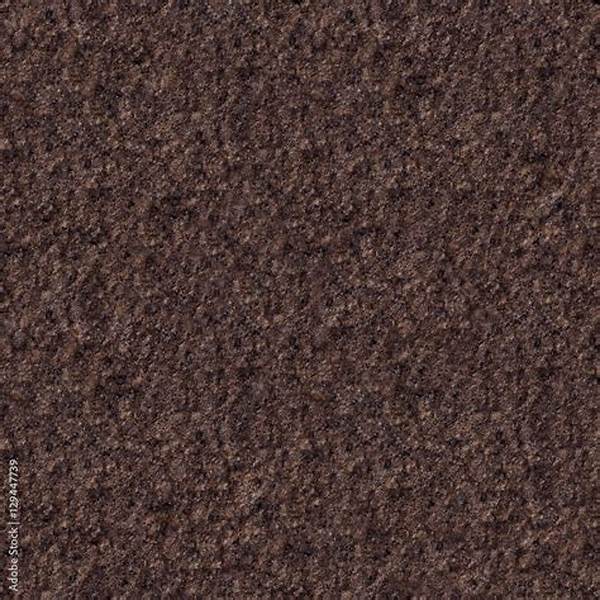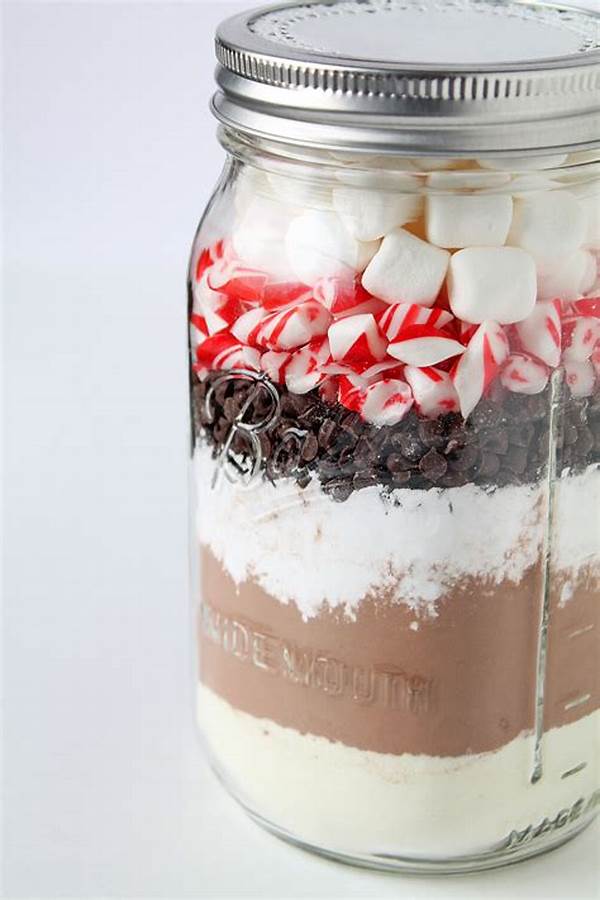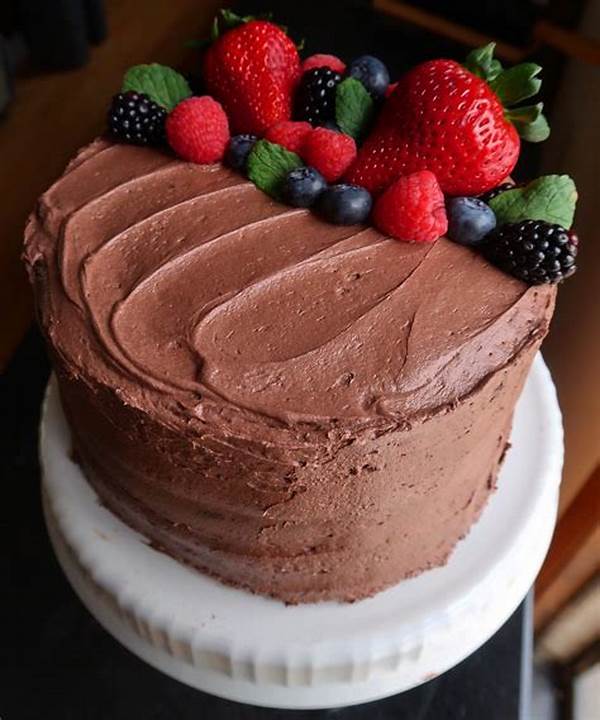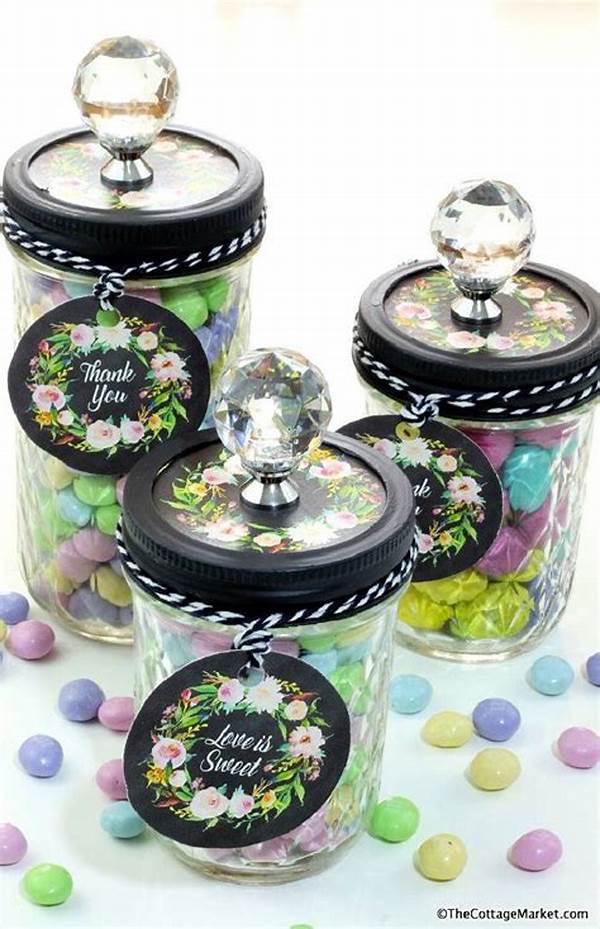Once upon a time, in a quaint little bakery nestled in the heart of a bustling town, there was a cake that won the hearts of everyone who tasted it. This cake was not just any ordinary confection; it embodied the perfect balance of flavor and texture. The secret to its allure wasn’t just in the high-quality chocolate or the precise measurements, but in its sumptuous texture that kept people coming back for more. This is the story of how the pursuit of a perfect chocolate cake texture became a treasured craft, celebrated by bakers and chocolate lovers alike.
Read Now : “plant-based Sweetener Dessert Ideas”
The Art of Achieving the Perfect Chocolate Cake Texture
In the world of baking, achieving the perfect chocolate cake texture is akin to discovering an ancient secret. Many have tried, but only a few have mastered the art. Each batch of cake became an experiment, a lesson in patience and precision. Bakers whisked late into the night under the glow of kitchen lights, determined to chase the dream of a cake with a soft crumb and a moist center. Every fold, every stir was an effort to create a texture that was both delightfully airy yet rich with decadence. Behind each bite lay countless tales of trials, experiments with ingredients, and the occasional mishaps leading to something truly extraordinary. In those kitchens, the aroma of a baking chocolate cake was not just a smell; it was the harbinger of something magical — a cake with a texture that perfectly marries the wants of the sweet-toothed with the standards of the discerning critic.
Secrets to the Perfect Chocolate Cake Texture
1. Balance in Ingredients: Finding the perfect chocolate cake texture often begins with balancing the flour and cocoa ratio, ensuring a tender bite without compromising flavor.
2. Precision in Mixing: Over-mixing can ruin the perfect chocolate cake texture; hence, a gentle hand is required to preserve the airy quality of the batter.
3. Temperature Matters: Baking at the right temperature is crucial. Too hot, and the cake becomes dry; too low, and achieving that perfect chocolate cake texture becomes impossible.
4. The Creaming Method: Achieving the perfect chocolate cake texture starts with properly creaming butter and sugar, which provides the right foundation.
5. Timing is Everything: Perfect chocolate cake texture demands the right baking time — taken out too early, it’s undercooked; too late, it’s overbaked.
The Journey to Discovering the Perfect Chocolate Cake Texture
For Sarah, a budding baker, the journey to discovering the perfect chocolate cake texture was a testament to perseverance. Her first attempts were, by her own admission, not great — cakes that were a little too dense, others quite dry, and some outright disasters. But each imperfect cake taught her something invaluable. Friends and family became the enthusiastic taste-testers, offering advice, encouragement, and sometimes, critique. With every failure, her resolve only strengthened.
Finally, after months of practice and a diary full of notes, Sarah produced a cake that stopped conversations and drew sighs of delight from those who tasted it. It had the elusive blend of a light, moist crumb melded with a richness that danced on the tongue. In that moment, Sarah knew she had uncovered the secret to the perfect chocolate cake texture. She realized it wasn’t just about ingredients or techniques; it was the love, trial, error, and passion stirred into her batter that made her creation extraordinary.
Tips for Achieving the Perfect Chocolate Cake Texture
1. Quality Ingredients: Start with high-quality chocolate — it’s essential for the flavor and the integrity of the cake’s texture.
2. Room Temperature Ingredients: Allow all ingredients to reach room temperature before mixing to ensure a smooth batter.
3. Sift Dry Ingredients: Sifting adds air and removes lumps, aiding in achieving that desired perfect chocolate cake texture.
4. Gentle Fold: Incorporate beaten egg whites delicately to maintain an airy, soft cake.
5. Baking Pans Matter: Use the right size pans to control the rise and fall, which impacts the perfect chocolate cake texture.
6. Don’t Overlook Cooling: Letting the cake cool gradually can keep the texture from becoming too dense.
Read Now : Stevia And Agave For Vegans
7. Choosing the Right Cocoa: The type of cocoa used affects the crumb texture; Dutch-processed cocoa offers a smoother result.
8. Taste Testing: Don’t shy away from tasting the batter — a good cake begins with a well-balanced batter.
9. Patience is Key: Allow the cake to rest before frosting; it helps maintain the internal structure.
10. Experience Speaks: Every celebrated baker has experienced missteps — don’t be afraid to learn from them.
Crafting the Perfect Chocolate Cake Texture: A Baker’s Reflection
Years after that quaint bakery first opened its doors, its legacy stood on the foundation of its signature chocolate cake. Visitors marveled at how each slice seemed to defy the laws of physics, with a crumb so fine it seemed to melt away, leaving only the rich, lingering taste of chocolate. It was a cake that knew its own story, one of persistence, experimentation, and passion.
The bakers who continued to work there remembered the founder’s insistence on quality and consistency. “Perfect chocolate cake texture,” she would say, “is like a symphony — each ingredient has a role to play, and the end result should leave you wanting more.” Her words echoed in the flour-dusted walls of the kitchen, guiding them as they crafted each batch with the same care and attention to detail.
And so, the legacy of the perfect chocolate cake texture lived on, handed down from one baker to the next, a testament to what can be achieved with patience, passion, and a love for the craft. It whispered its secrets to those willing to listen, promising that while ingredients may change and techniques evolve, the heart of the cake would always remain the same: a delightful texture that transcends the ordinary and becomes something truly unforgettable.
The Evolution of the Perfect Chocolate Cake Texture
In the ever-changing world of baking, the pursuit of the perfect chocolate cake texture has seen its evolution. The exploration began in small kitchens, where bakers experimented with simple ingredients like butter, sugar, and cocoa. It’s a tale not just about perfection but about adaptation, as techniques have been refined and tools modernized.
Through ages, bakers have honed their skills, learning from mishaps and victories, understanding that the perfect chocolate cake texture is not a static goal but an ever-moving target. The whispers of past techniques meet the innovation of current practices, allowing each new generation of bakers to engage with this delicious enigma. In this, perfection is not found in the result alone but in the joyous journey of its creation.
Embracing the Journey of Perfect Chocolate Cake Texture
The bakery’s bustling environment, filled with laughter and the sweet scent of chocolate, represented more than just a successful business; it encapsulated the journey families and friends cherish—the communal joys of cooking, eating, and celebrating. Making a perfect chocolate cake became symbolic of deeper connections. Each attempt was not only about achieving the ideal texture but also about cherishing the process, where each slice told a story.
For those who dared to enter the layers of what makes a perfect chocolate cake texture, the bakery stood as a beacon of inspiration. It served as a reminder that behind the flour-dusted aprons and the chocolate-stained countertops were dreams and dedication — that every cake had a soul born from ambition, sprinkles of patience, and the camaraderie of shared success. Thus, the perfect chocolate cake texture became a culinary legend — a delicious testament to creativity and love.




